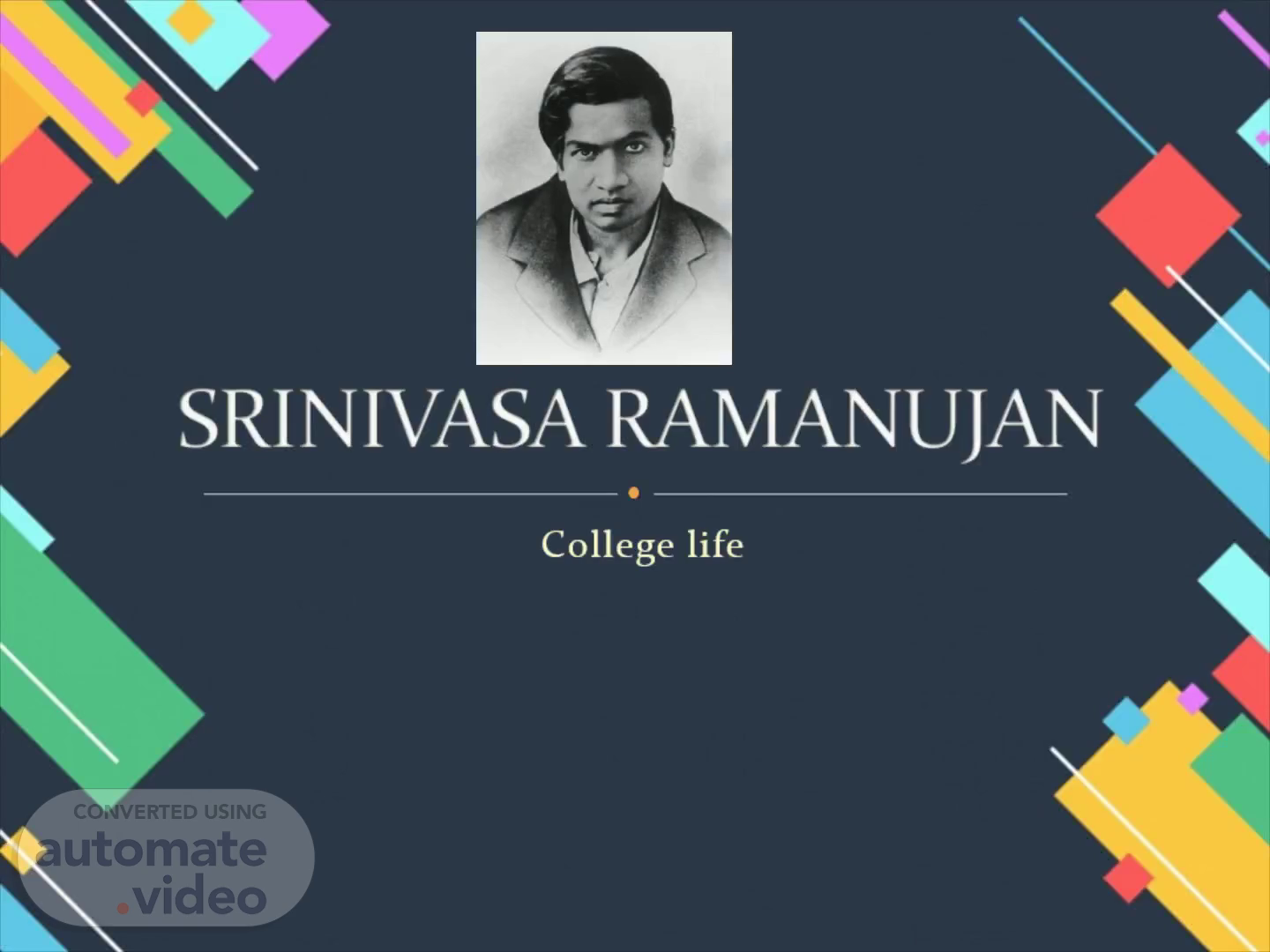Page 1 (0s)
College life. SRINIVASA RAMANUJAN.
Page 2 (4s)
Ramanujan graduated from a higher secondary school located in their town in 1904. He was awarded the K. Ranganatha Rao prize for mathematics from the school's headmaster, Krishnaswami iyer . Iyer introduced Ramanujan as an outstanding student who deserved scores higher than the maximum. He received a Scholarship to study at Government Arts College Kumbakonam ..
Page 3 (27s)
In fact, He was so intent on mathematics that he could not focus on any other subject and failed most of them, losing his scholarship in the process. In August 1905 Ramanujan ran away from home, heading towards Visakhapatnam, and stayed in Rajahmundry for about a month..
Page 4 (48s)
He later enrolled at Pachaiyappa's College in Madras . His aim was to pass the First Arts examination which would allow him to be admitted to the University of Madras..
Page 5 (1m 0s)
He attended lectures at Pachaiyappa's College but became ill after three months study. He took the First Arts examination after having left the course. He passed in mathematics but failed all his other subjects and therefore failed the examination. This meant that he could not enter the University of Madras ..
Page 6 (1m 23s)
Without an FA degree, he left college and continued to pursue independent research in mathematics, living in extreme poverty and often on the brink of starvation ..
Page 7 (1m 34s)
Continuing his mathematical work Ramanujan studied continued fractions and divergent series in 1908. At this stage he became seriously ill again and underwent an operation in April 1909 after which he took him some considerable time to recover . [.
Page 8 (1m 51s)
He married on 14 July 1909 when his mother arranged for him to marry a ten year old girl S Janaki Ammal . Ramanujan did not live with his wife, however, until she was twelve years old ..
Page 9 (2m 6s)
After the marriage, Ramanujan developed a hydrocele testis . The condition could be treated with an operation but his family could not afford it. In January 1910, a doctor volunteered to do the surgery at no cost. To make money, he tutored students at Presidency College who were preparing for their Fellow of Arts exam..
Page 10 (2m 29s)
In 1911 Ramanujan published the first of his papers in the Journal of the Indian Mathematical Society. His genius slowly gained recognition, and in 1913 he began a correspondence with the British mathematician Godfrey H. Hardy that led to a special scholarship from the University of Madras and a grant from Trinity College, Cambridge. Overcoming his religious objections, Ramanujan traveled to England in 1914, where Hardy tutored him and collaborated with him in some research..
Page 11 (3m 0s)
In England Ramanujan made further advances, especially in the partition of numbers. His papers were published in English and European journals, and in 1918 he was elected to the Royal Society of London. In 1917 Ramanujan had contracted tuberculosis, but his condition improved sufficiently for him to return to India in 1919. He died the following year, generally unknown to the world at large but recognized by mathematicians as a phenomenal genius. Ramanujan left behind three notebooks and a sheaf of pages containing many unpublished results that mathematicians continued to verify long after his death..
